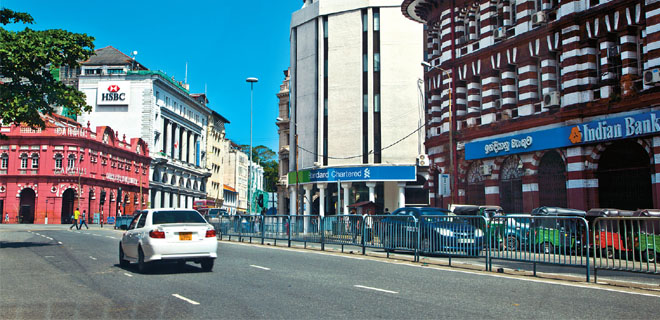PSBs: A capital question
PSBs must focus on improving the quality of their lending decisions by strengthening their internal control

The Government of India’s (GoI) plan to help public sector banks (PSB) make a fresh start is well intentioned. Replenishing lost capital is necessary, but it comes with several constraints. For one, GoI’s insistence on maintaining a 50 per cent equity in PSBs from raising capital from the market. On the other hand, SEBI’s requirement of GoI reducing its stake in PSBs to 75 per cent or less by August 2017 also constrains further GoI infusion for several weak PSBs. But, providing for bad loans is not enough. Why will raising the required capital—assuming they do, stem future loan losses? Given the changing landscape, GoI must ask itself, will PSBs remain relevant in the banking sector in future?
According to the Indradhanush scheme, banks need Rs 1.80 trillion in the next four years to become well-capitalized, of which the budgetary allocation for support is only Rs 700 billion—banks will need to raise the remaining Rs1.10 trillion from the market by FY2019. Of the promised Rs700 billion, the GoI had already infused Rs 200 billion into PSB by 31 December, 2015—therefore, GoI will infuse only an incremental Rs 500 billion in PSBs by FY2019.
In the past, GoI capital infusion, to an extent has been circular flow of money—the GoI has been increasing its stake in PSBs, by reinvesting dividends received. Over the past six years, GoI has infused Rs678.3 billion in PSBs. Almost half of that was funded by the PSBs themselves—through dividend (to the extent of GoI’s shareholding) and dividend distribution tax. If PSBs are to grow, they may either consider stemming dividends, or raising more capital.
SEBI regulations require GoI to reduce its stake in listed banks to 75 per cent or less by August 2017. This results in seven PSBs being automatically excluded from the incremental Rs500 billion GoI infusion, and another three where the infusion will have to be limited—unless these banks are able to dilute the GoI shareholding by raising a large amount of capital from the market. Therefore, the proposed capital infusion under Indhradhanush scheme will directly benefit only 11 of the 21 listed PSBs.
Another opposing constraint comes for the possible dilution of GoI stake to less than 51 per cent, should banks raise the required Rs1.10 trillion from the market in the next four years. On March 2, 2016, the market cap of PSBs aggregated Rs 2.85 trillion, but the free float market cap was only Rs0.99 trillion. Of this, the SBI group accounts for more than half. How realistic is it to expect banks to raise this Rs 1.10 trillion in equity capital from the market? Even if the public sector banks raised the capital from the market, it would significantly dilute GoI’s stake (to below 51 per cent in some cases), unless valuations improve substantially. And, for valuations to improve substantially, PSBs will first need to demonstrate performance, and improved risk management practices that will temper future deterioration in asset quality.
While GoI and RBI are saying the right things, that only banks that perform will get capital, Life Insurance Corporation of India (LIC) continues to be a surrogate, which possibly creates a contagion risk. IiAS estimates that LIC has infused over Rs120 billion in financial support to PSBs in just the past three years, and is expected to infuse more capital in the current year.
Further, LIC’s median equity stake in PSBs has increased over a five-year period to 11 per cent on December 31, 2015 from 9 per cent on March 31, 2010—which has effectively increased GoI’s control over these banks. PSBs must focus on improving the quality of their lending decisions by strengthening their internal controls and credit assessment processes. The slow slackening of underwriting requirements to ease lending has led to several power plants being funded without having either power purchase agreements or fuel supply agreements in place, resulting in stalled projects. Funding over-capacity, and therefore the current spate of defaults in the steel industry is also, at some level, a function of the ease of funding support from banks. While banks are focussed on the much-needed strengthening of internal processes, they also need to have a macro perspective on their impact on industry dynamics.
RBI Governor Raghuram Rajan advocates setting rules of monetary policy for central bankers so that they are encouraged to set policies within the given constraints that benefit the world in the long run, rather than pass on a set of their home country’s problem to another part of the world. Surely, Indian banks can coordinate to ensure that lending practices have a long-term positive impact on the industry—since, eventually, the industry excesses will come back to bite the banks.
Even after all of this, it may be too late for PSBs (other than SBI) to remain relevant. Private sector banks have outpaced PSBs’ growth rates in the past. That the market cap of private sector banks was 2.5x those of PSBs (including SBI) on 2 March, 2016 is a telling sign. In 2012-15, banks made 12 public issuances for equity, of which seven were made by private sector banks. But, unlike PSBs, private sector banks have raised about half the amount of capital that PSBs have in the past six years —largely because private sector banks are better capitalised and have been careful about conserving capital.
Private sector banks are like David—they are steadily beating down the behemoth and may just win the battle against Goliath of the banking sector. The March 2014 PJ Nayak Committee report optimistically predicted that PSB’s market share would decline to 63.2 per cent by 2025 from their 73 per cent share in 2013. We believe that, given all that has transpired since the report, perhaps the market share of PSBs will be closer to 50 per cent by 2025. This is because the GoI, in pressing to hold 50 per cent equity is itself constraining PSBs ability to raise capital and grow.







